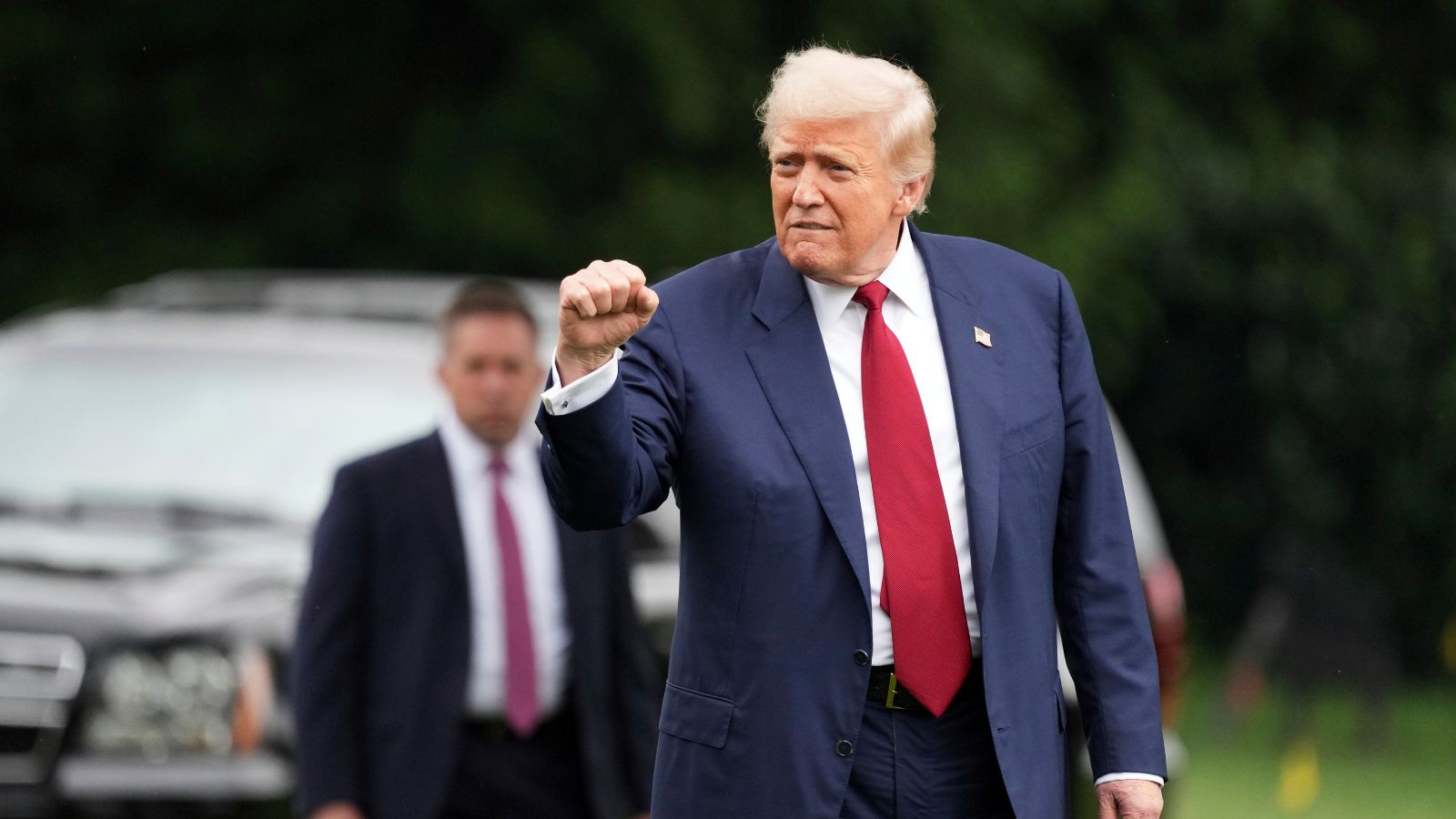US President Donald Trump on Tuesday said he would raise the tariff on India “very substantially over the next 24 hours”, stating that while India is set to offer the US “zero tariffs” under a trade deal, it would not be good enough due to its purchase of Russian oil.
On Monday, too, Trump had warned that he would raise the tariff on India “substantially”, saying that India was not only buying “massive amounts of Russian oil” but also selling it “on the open market for big profits”.
Russia’s RT channel reported that National Security Advisor Ajit Doval had reached Moscow Tuesday for talks.
In the sharpest statement since Trump announced a 25 per cent tariff on Indian goods from August 7, along with an unspecified penalty for its defence and energy imports from Russia, New Delhi hit back on Monday, saying the targeting of India was “unjustified and unreasonable”, and the country would take “all necessary measures” to safeguard its “national interests and economic security”.
On Tuesday, Russia said sovereign countries have the right to select their partners in trade and economic cooperation based on their interests. “We believe that sovereign countries must have, and do have, the right to choose their trade partners, the partners in trade and economic cooperation, on their own, and independently determine those modes of trade and economic cooperation that suit the interests of a country in question,” Kremlin spokesman Dmitry Peskov told journalists, commenting on the US’s threats regarding India.
In his latest statement on the issue, Trump said in an interview with CNBC on Tuesday: “With India, what people don’t like to say about India, they’re the highest tariff nation. They have the highest tariff of anybody. We do very, very little business with India because their tariffs are so high.”
“India has not been a good trading partner, because they do a lot of business with us, but we don’t do business with them. So we settled on 25% (tariff), but I think I’m going to raise that very substantially over the next 24 hours, because they’re buying Russian oil. They’re fuelling the war machine. And if they’re going to do that, then I’m not going to be happy,” he added.
Story continues below this ad
“Now I will say this: India went from the highest tariffs ever — they will give us zero tariffs. And they are going to let us go in. But that’s not good enough because of what they’re doing with Russian oil — not good,” Trump said, responding to a question on the sticking points.
When asked about the price of oil if Russian supplies were removed from the market, Trump said he was not concerned about prices, as the US is drilling at levels never seen before.
Last week, Trump had mounted a sharp attack on India and Russia for their close ties and said the two countries can take their “dead economies down together”, a remark which prompted New Delhi to say that India is the world’s fastest-growing major economy.
In its statement on Monday, the MEA had called out the US and European Union for continuing trade with Russia. “Where the US is concerned, it continues to import from Russia uranium hexafluoride for its nuclear industry, palladium for its EV industry, fertilisers as well as chemicals,” it had said.
Story continues below this ad
On Monday, Russian Foreign Ministry Spokesperson Maria Zakahrova accused the US administration of continuing a neocolonial policy against the nations of the Global South to maintain American hegemony. “Sanctions and restrictions are a regrettable reality of today’s historical stage, which affects the entire world,” Zakaharova said in a statement.
“Washington cannot come to terms with the loss of hegemony in the emerging multipolar world order and continues to pursue a neocolonial policy in an attempt to maintain its position, using politicised levers of economic pressure against those who refuse to follow in its wake in the international arena,” she added.
Meanwhile, rating agency ICRA on Monday revised India’s FY26 GDP growth forecast downward from 6.2 per cent to 6.0 per cent, citing US tariff and uncertainty around potential penalties as key risks. Despite a robust trade surplus with the US — which rose to $41 billion in FY2025 from $21 billion in FY2015 — India’s competitive edge could be eroded in the absence of a bilateral trade resolution, ICRA said.
The agency identified textiles, auto components, tyres, chemicals, agrochemicals, and cut & polished diamonds (CPD) as the worst-hit sectors. On the other hand, pharmaceuticals, petroleum products and telecom instruments remain relatively stable, according to the report.
Story continues below this ad
“The pharma sector, with 37 per cent of its exports directed to the US, has so far been exempted from the new tariffs. The telecom instruments sector, where the US forms over 40 per cent of India’s export base, faces negligible impact as competing nations have only slightly lower tariffs. Petroleum product exports are also excluded from the tariff hikes, though India’s reliance on discounted Russian crude — which has shrunk in FY2025 — may have indirect cost implications,” the report said.
The report also said there are signs of export re-routing as Indian exporters seek to maintain access to the US market. CPD exporters, for example, may shift to trade hubs such as Belgium and the UAE, while firms in sectors like auto and tyres are attempting to diversify into the EU, UK, and Asia-Pacific markets, though this will take time, it said.
“The risk of trade being redirected to countries like Vietnam and Indonesia is high, given their lower tariff burden and increasing share in US imports,” it added.
ICRA said that unless a bilateral trade agreement is swiftly concluded, the current tariff structure could significantly alter India’s export trajectory in FY2026 and beyond. The high sectoral dependence on US markets, coupled with tariff asymmetry, poses a serious challenge to India’s trade competitiveness, the report said. WITH PTI inputs from Moscow

